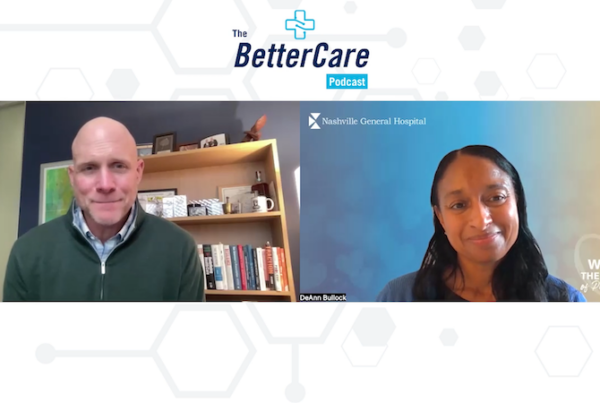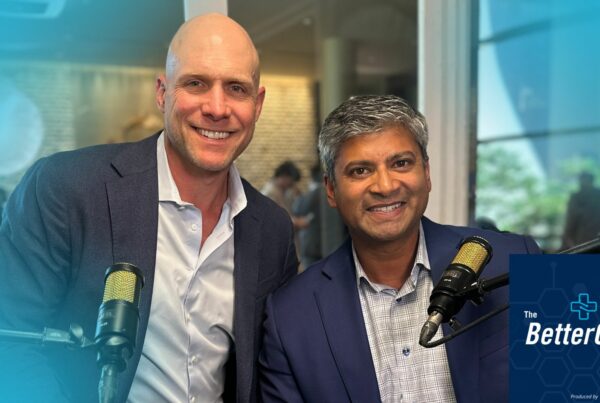Connecting Buyers and Users for Effective Healthcare Technology Adoption
Technology adoption within our healthcare system is more important than ever. With rapid digital tech and AI innovation in hospitals, one of the significant hurdles of adoption is the disconnect between those who purchase the technology and those who use it. This gap can impede the effective use of new systems, ultimately limiting the benefits that technology can bring to patients and clinicians.
Dr. Jon Handler, Senior Fellow of Innovation at OSF HealthCare, recently discussed these challenges with EvidenceCare’s CMO and Co-Founder Dr. Brian Fengler on an episode of The Better Care Podcast. Dr. Handler offered insights into how health systems can avoid and address these issues.
Some quotes have been slightly edited for brevity.
The Disconnect Between Buyers and Users
In many healthcare organizations, the decision-makers who approve technology purchases are often not the end-users. This disconnect can lead to a mismatch between the functionality of the technology and the needs of the clinicians who will be using it. So, what’s the solution?
To bridge the gap between technology purchasers and users, healthcare systems can implement several strategies:
-
-
Involve End-Users in the Decision-Making Process
-
One of the most effective ways to ensure that technology meets the needs of its users is to involve clinicians in the decision-making process from the beginning. By gathering input from those who will be using the technology, organizations can better understand the practical requirements and potential challenges.
This collaborative approach not only increases user buy-in but also fosters a sense of ownership and accountability among clinicians. Furthermore, involving clinicians early can help identify potential issues and address them before they become major obstacles to adoption.
“It’s essential for an innovation team to maintain strong connections with the operational and clinical teams and truly understand their needs. This way, when they discover solutions and opportunities, they can effectively communicate and position them. They can also determine which innovations will likely be useful for the specific needs of the different clinical and operational teams.” – Dr. Jon Handler
-
-
Provide Comprehensive Training and Support
-
Once a new technology is implemented, it is crucial to provide comprehensive training and ongoing support to ensure that users can effectively utilize the system. This training should be tailored to different user groups to address their specific needs and skill levels.
For instance, clinicians, administrative staff, and IT personnel may require distinct training programs focusing on their unique interactions with the technology. By customizing training sessions, organizations can ensure that each group fully understands how to use the system to its maximum potential.
Offering continuous support, such as online resources and regular refresher courses, can help address any issues that arise post-implementation and keep users updated on any system upgrades or changes.
For IT professionals at health systems, facilitating this targeted training and support infrastructure is essential. It not only enhances user confidence and proficiency but also promotes sustained engagement and long-term success of the new technology. Ultimately, such an approach ensures that the investment in new technology translates into tangible improvements in patient care and operational efficiency.
-
-
Focus on User-Centric Design
-
Technology solutions should be designed with the end-user in mind. This means creating intuitive, easy-to-use interfaces and minimizing the time required to perform essential tasks. User-centric design can significantly enhance the adoption and satisfaction of new technology. By prioritizing the user experience, developers can reduce the learning curve associated with new systems, making it easier for users to adapt.
Furthermore, a focus on user-friendly design can lead to fewer errors and increased productivity, ultimately improving the overall efficiency of healthcare delivery. When technology is seamlessly integrated into clinical workflows, it not only saves time, but also fosters a positive attitude towards its use.
“When the iPhone first came out, doctors weren’t afraid of using new technology. Doctors loved having medical resources on their phones. This experience solidified my belief: new tech must save doctors time for smooth adoption.” – Dr. Jon Handler
-
-
Pilot Programs and Feedback Loops
-
Before rolling out new technology across an entire organization, implementing pilot programs can help identify potential issues and gather feedback from users. This feedback can be used to make necessary adjustments and improvements before a full-scale implementation. Pilot programs also allow for testing the technology in real-world scenarios, providing valuable insights into its practical application and effectiveness.
Additionally, involving a small group of users early on can create a group of advocates who can champion the technology and support their colleagues during the broader rollout. The iterative process of gathering and acting on feedback is crucial for refining the technology.
“The most important thing we’ve found is the feedback loop. It’s the time it takes to go from creating something new to actually testing it and getting feedback.
Nobody makes something perfect on the first try, and that’s okay. We test with users, and their feedback shows us it’s not quite right. We make improvements, but it might still need work. The key is to have a short feedback loop.
A shorter loop means we can quickly learn if something is good or not. If it’s not good, we can decide to stop working on it. It’s not about immediate perfection but having a clear path to get feedback and iterate on our ideas.” – Dr. Jon Handler
-
-
Resistance to Change
-
Clinicians may be resistant to adopting new technology, especially if they feel it adds to their workload or disrupts their workflow. To address this, it’s essential to communicate the benefits of the technology clearly and demonstrate how it can improve patient care and make their jobs easier.
Providing real-world examples and case studies can help illustrate the positive impact of the new technology. Additionally, involving clinicians in the decision-making and implementation process can increase their sense of ownership and acceptance of the technology. Ultimately, the key to successful adoption is showing how the technology saves time and enhances efficiency. Dr. Handler said it best…
“The way to make adoption happen is to save the user’s time. That way you create a value proposition for the buyer, and you have a built-in value proposition for the user.” – Dr. Jon Handler
Improving Clinical Technology Adoption
Dr. Jon Handler’s insights highlight the crucial role of bridging the gap between technology purchasers and users. He emphasizes that the key to successful technology adoption lies in understanding and meeting the needs of those who will be using the technology daily.
By involving clinicians from the outset, providing tailored training, and maintaining a feedback loop for continuous improvement, healthcare organizations can ensure smoother technology integration.
As healthcare continues to evolve, adopting innovative solutions thoughtfully and strategically will be essential for delivering better patient outcomes and enhancing overall healthcare efficiency.
For the full interview between Dr. Brian Fengler and Dr. Jon Handler, watch or listen to Episode 17 of The Better Care Podcast.









